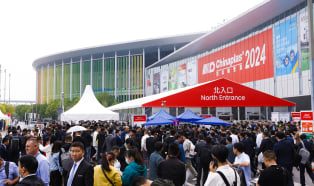
Constantia Flexibles introduces EcoTwistPape
Constantia Flexibles introduces EcoTwistPaper, an innovative packaging solution for the confectionery industry.

Constantia Flexibles introduces EcoTwistPaper, an innovative packaging solution for the confectionery industry.

UV barriers developed by Avient and destined for PET bottles are approved as limited compatible with the PET bottles recycling stream in Europe.

Mondi, a global leader in packaging and paper, has launched a closed loop programme in partnership with Biedronka, Poland’s largest retail chain.

Mondi introduces ProVantage SmartKraft Brown and White, an innovative blend of fresh and recycled fibres, setting new standards in sustainability and performance.

Sainsbury’s is pioneering the way in plastic reduction as the first retailer to introduce pulp trays for all of its salmon and trout products, which use 70% less plastic and can be recycled at home.

Dow and RKW Group join forces to develop a shrink film containing household waste.

When FACHPACK takes place in Exhibition Centre Nuremberg from 24 to 26 September, the long-standing trade fair will once again provide a compact yet comprehensive insight into all relevant issues in the packaging industry.

Does the packaging industry need to evolve what it already does well, or tear up the rule book and blaze a new trail? According to Easyfairs’ Senior Marketing Manager James Montero-MacColl, in this industry, there’s room for both.

Netstal appoints Nadeem Amin as its new President for the Americas Region, effective June 1, 2024. He will report directly to Netstal CEO Renzo Davatz.

Crocco and Versalis have launched a collaboration to produce food packaging film made from raw materials partly derived from the recycling of post-consumer plastics.

Amcor has opened its European Innovation Center in Belgium. The facility will partner with brands and retailers from across the region to design packaging that delivers better results for consumers and the environment alike.

After a six-year hiatus, Chinaplas 2024 made a glorious return to Shanghai and concluded successfully on April 26 at the National Exhibition and Convention Center (NECC), Hongqiao, Shanghai, PR China.